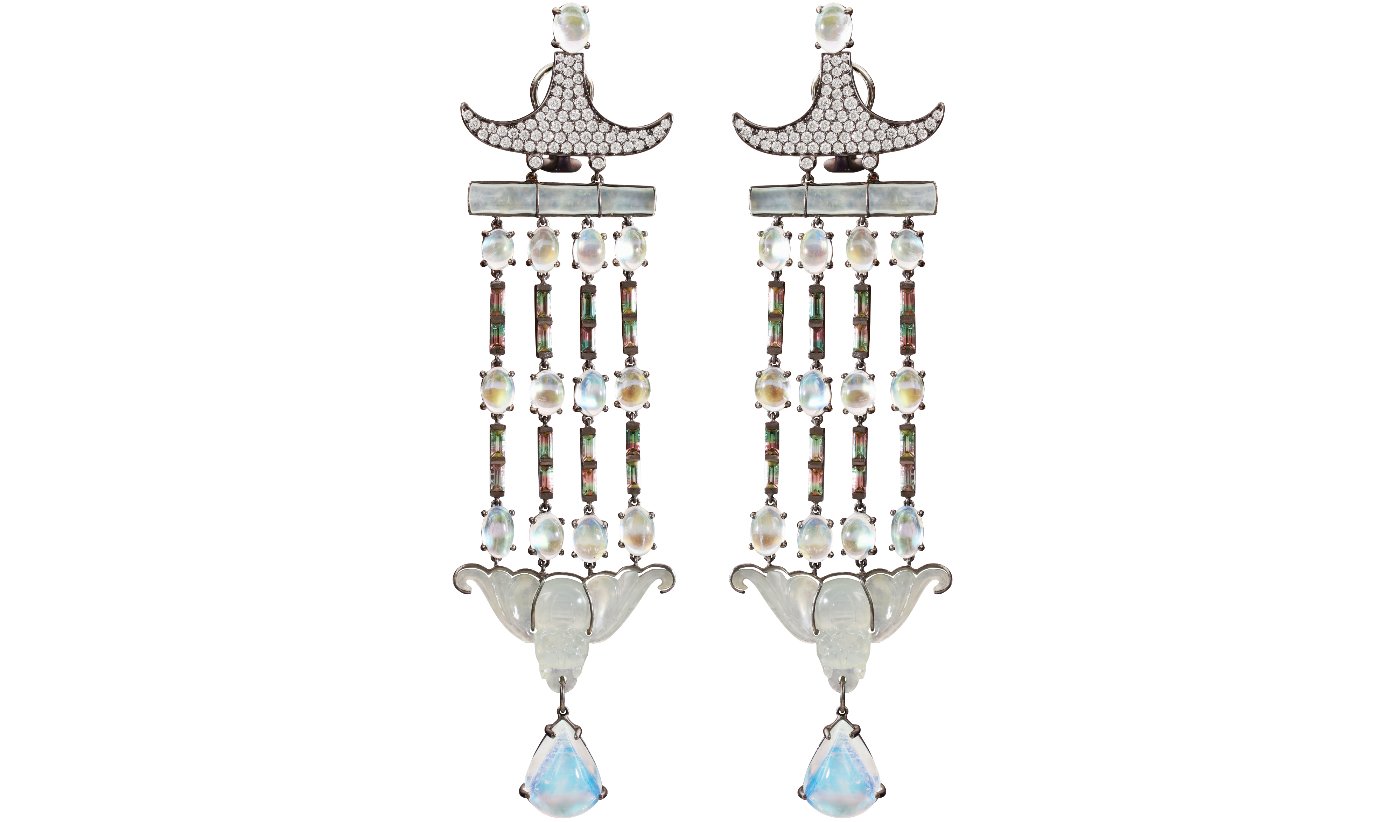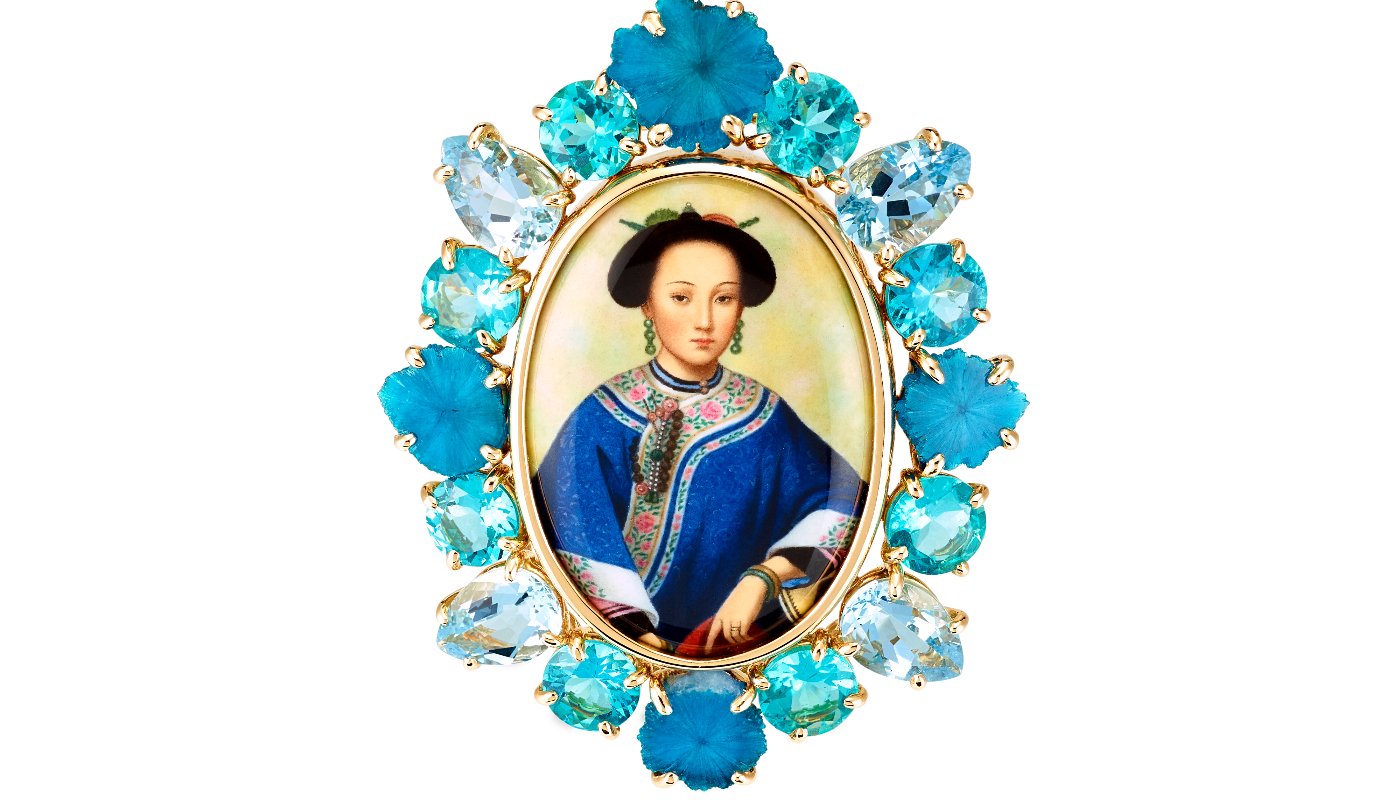n the second century BC, the Han Emperor sends his envoy, Zhang Qian, to form alliances with tribes. Preferring peace, China had chosen to establish trade routes. The main product was silk, which gives its name to this road.
The manufacturing technology became a secret, well-kept secret whose disclosure was punishable by death. A luxury product, silk, reserved for the court and export, became a currency.
Camel caravans depart from Chang’an, the capital, to Central Asia. From Dunhuang, a road crossed the Pamir Mountains to the Kushana Empire in Bactria and reached India.
The northern route passed through the oasis of Tourfan and ended in the Parthian Empire, from where luxury goods was transported to the Persian Gulf and the Mediterranean Sea. Silk arrived in Rome, where the aristocratic ladies have been waited for it.
Conversely, China has discovered new products: glass, jewelry, printed kinds cottons from Persia and India.

A figure in Chinese legend who was taken as a consort by the Qianlong Emperor (r. 1735-1796) of the Qing dynasty in the 18th century. Although the stories about her are believed to be mythical.
A Kashgarian Muslim Uyghur girl named Iparhan («Musky Woman»). Even more remarkable than her beauty was the scent her body naturally produced; captivated, the emperor sought her as an Imperial Consort for his harem. She was given as a gift to the emperor and carefully escorted all the way to the imperial palace in Beijing, washing every day along the road in camel’s milk to preserve her mysterious fragrance.
Upon her arrival at the imperial palace, the Fragrant Concubine was given a garden and a luxurious room as a sign of the Qianlong Emperor’s devotion. Homesick and distraught, she remained disconsolate as the emperor made ever-increasing efforts to recreate her distant village, building her a mosque, miniature oasis and bazaar outside her windows in an effort to bring her happiness.
Finally she relented and came to love him when he sent messengers to Kashgar to return with a jujube tree bearing golden fruit and the Fragrant Concubine became the emperor’s cherished consort until her death.

An enduring symbol of national unity and reconciliation, her body was brought back to her home of Kashgar, where she is now entombed, in a procession of 120 bearers in a journey that took over three years.
“Concubines were historically the unmarried mistresses of powerful men. Much like courtesans in the West and usually young women of lower rank, often approved by the wife. Their children could inherit and rule in the right circumstances. Qianlong had 42 concubines over his 60 year rule but many more women in his hareem. It just makes you realize what a difference a few hundred years can make to the prospects of women. Lydia often focuses on strong women in history, distilling the essence of their power into large, beautifully strange jewels,” explains Melanie Grant.
Jade is a material that symbolizes the intimate alliance of aesthetics and religion within Chinese jewelry. Various philosophical and religious schools are attribute spiritual and moral virtues to jade. Since prehistoric times, jade has been a natural mineral substance that has gained gem status. It has been researched, harvested and fashioned to make tools, weapons, ornaments, many instruments and symbols of power used by many civilizations.
In China, the cutting of jade is a tradition that dates back around 6,000 years. The first jewels date from the Neolithic period (from 4000 to 2000 BC approx.). This material is indeed very difficult to work with because, unlike other stones, it does not split.

To give it a smooth and round appearance, the craftsman has to spend long hours polishing it with an abrasive. Held in high esteem by Chinese scholars and aristocrats, jade was not only a precious object: some of these stones were traditionally applied to the body to protect against harmful influences.
In the earrings, Lydia Courteille associated the Crane with beans, which stands out, in the Chinese symbolic - prosperity, rebirth, happiness and fertility.
The jade shrouds is a ceremonial suit made of pieces of jade in which royal members in Han dynasty China were buried. They form a set intended to preserve the dead in the afterlife. The jade is supposed, by its magical properties, to protect the body of the deceased through the centuries. The pieces that make up these shrouds are mainly square or rectangular, fixed by threads passed through small holes at each corner.
The type of thread used depends on the status of the person buried, the Book of Later Han tells us - jade burial suits of emperors used gold thread; princes, princesses, dukes, and marquises, silver thread; sons or daughters of those given silver thread, copper thread; and lesser aristocrats, silk thread, with all others being forbidden to be buried in jade burial suits.
The complexity of the realization required several years and a large staff. If Prince Liu Sheng and his wife had the privilege of the golden thread, another fallen prince, Liu Kuan, was not even entitled to his jade shroud.
Therefore the protocol was not always strictly followed, and, perhaps these costumes were more common among the aristocrats of the Han dynasty, but most of them disappeared, victims of looting.
The Mogao Caves hang like honeycombs in a beehive on a cliff in the Mingsha Hills, southeast of the center of Dunhuang, an oasis located at a religious and cultural crossroads on the Silk Road, in Gansu province. They contain the world’s richest collection of paintings, manuscripts and Buddhist statues.
Dug throughout over a millennium, spanning nine dynasties from the 4th to the 14th century, they bear witness to the most glorious period of Buddhist art. Located in a tiny oasis nestled against the western slope of a steep valley, the caves are hidden from view until you are directly in front of them. Almost 500 caves still in good condition contain more than 45,000 murals and 2,000 colored stucco sculptures (the rock of the caves being too sandy to be carved directly). Most of the caves linked together by balconies, walkways and corridors.
The predominant colors - green, blue, white, black and pink - are still vibrant although in areas the pigments have changed oxidation is apparent in the vermilion reds which have turned to a chocolate brown.
Thanks to the desert climate of Taklamakan, the murals and sculptures have been well preserved for over 15 centuries. These caves were places of worship of great importance on the Silk Road. A local legend says that in 366 AD. BC, the Buddhist monk Lie Zun had a vision of a thousand Buddhas, and convinced a pilgrim on the Silk Road to build the first chapels.
With increased trade during the Han dynasty and cultural exchanges through the Silk road, lions were introduced into China from the ancient states of Central Asia by peoples of Sogdiana and Samarkand.
The concept became popular in Chinese Buddhism, features a pair of highly stylized lions—often one male with a ball and one female with a cub — which were thought to protect the building from harmful spiritual influences and harmful people that might be a threat.
Fo lions are traditionally carved from decorative stone. The lions are always presented in pairs, a manifestation of yin and yang, the female representing yin and the male yang. Symbolically, the female lion protects those dwelling inside (the living soul within), while the male guards the structure (the external material elements).











